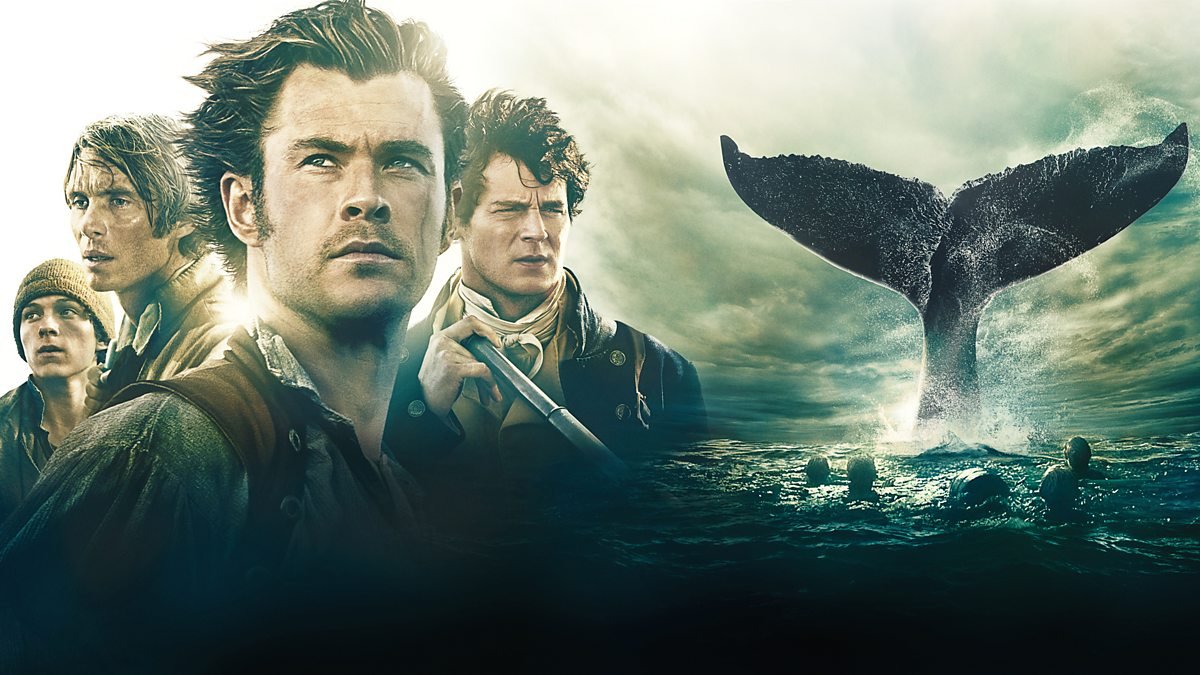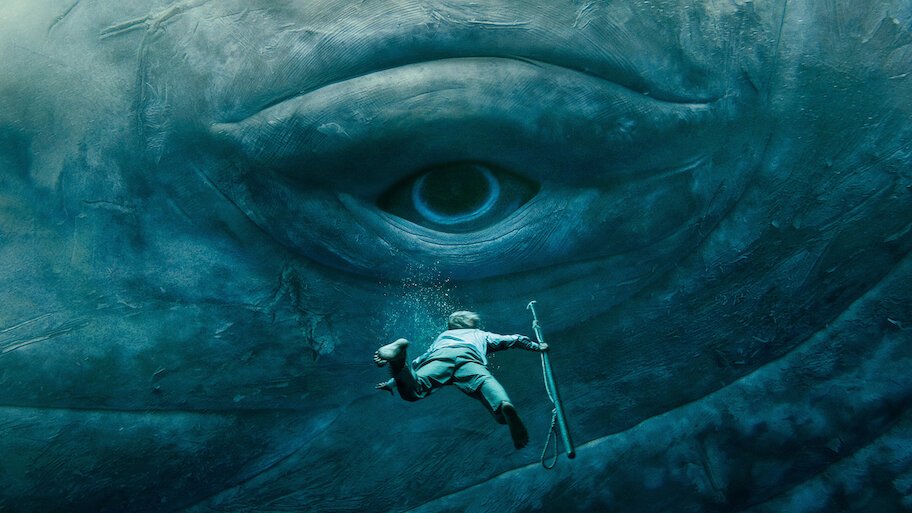
As a passionate film enthusiast, I was thrilled to dive into the captivating world of “In the Heart of the Sea,” the latest cinematic masterpiece from the acclaimed director Ron Howard. Based on the true story that inspired Herman Melville’s literary classic “Moby Dick,” this film takes us on a harrowing journey through the perils of 19th-century whaling, where the relentless pursuit of the mighty leviathans of the deep would test the limits of human endurance and the strength of the human spirit.
The film’s premise is simple yet profoundly compelling: in 1820, the whaling ship Essex, hailing from the bustling port of Nantucket, sets out on a routine expedition to fill its holds with the precious oil of the cachalot, or sperm whale. However, what should have been a straightforward voyage soon descends into a nightmare, as the crew finds themselves pitted against a colossal and vengeful whale, a battle that will push them to the brink of survival and forever shape the course of their lives.
I was struck by the sheer scale and intensity of the events that unfolded. The story of the Essex is not merely a tale of man versus nature, but a complex tapestry of human relationships, ambition, and the consequences of our actions. The rivalry between the ship’s captain, George Pollard, and his first mate, Owen Chase, adds an extra layer of drama and tension to the proceedings, as their clashing personalities and differing approaches to leadership come to a head in the face of adversity.
What truly sets “In the Heart of the Sea” apart, however, is the way it seamlessly blends historical fact with cinematic artistry. Director Ron Howard, known for his masterful storytelling and attention to detail, has crafted a visually stunning and emotionally resonant film that transports the viewer to the treacherous waters of the 19th-century Pacific Ocean. The film’s stunning cinematography, coupled with its powerful performances, create a sense of immersion that is both thrilling and harrowing.
I was struck by the way the film captures the sheer scale and power of the whales themselves. The description of the “colossal and vengeful whale” that attacks the Essex is a testament to the filmmakers’ commitment to authenticity and their understanding of the awe-inspiring nature of these magnificent creatures. The fact that the film does not shy away from the realities of whaling, even when it may be uncomfortable for modern audiences, is a testament to its integrity and its refusal to romanticize the past.
Indeed, one of the most fascinating aspects of “In the Heart of the Sea” is the way it grapples with the complex moral and ethical questions surrounding the whaling industry. While the film acknowledges the economic and practical necessity of whaling in the 19th century, it also forces the viewer to confront the brutality and environmental impact of this practice. The visceral depictions of the whale hunts, while difficult to watch, serve as a powerful reminder of the high price that was paid for the pursuit of this valuable resource.
Exploring the Enduring Legacy of “Moby Dick”

The story of the Essex and its ill-fated voyage was the inspiration for one of the most iconic works of American literature, Herman Melville’s “Moby Dick.” The fact that the real-life events that unfolded on the Essex were just as captivating and dramatic as the fictional tale that Melville would go on to weave is a testament to the enduring power of this story.
The narrator notes that in the 30 years between the Essex’s sinking and the publication of “Moby Dick,” the true story of the ship’s demise had become just as well-known as the literary masterpiece it would inspire. This speaks to the universal appeal of the themes and ideas that underpin this narrative – the struggle against the forces of nature, the quest for vengeance, the exploration of the human condition in the face of overwhelming adversity.
The narrator draws parallels between “In the Heart of the Sea” and other great naval adventures, such as “Master and Commander: The Far Side of the World.” This comparison highlights the enduring fascination with the high seas and the challenges faced by those who dare to venture into the unknown. The emphasis on the “last great naval adventure” to hit the silver screen further underscores the timeless appeal of this genre and the way it continues to captivate audiences.
But what truly sets “In the Heart of the Sea” apart is its ability to transcend the boundaries of the traditional nautical adventure. By delving into the complex relationships and power dynamics at play within the crew of the Essex, the film taps into universal themes of leadership, ambition, and the consequences of our actions. The rivalry between Captain Pollard and First Mate Chase is a prime example of this, as their clashing personalities and divergent approaches to their roles ultimately contribute to the ship’s downfall.
In this way, “In the Heart of the Sea” becomes more than just a thrilling tale of survival on the high seas. It is a meditation on the human condition, a exploration of the ways in which our own flaws and failings can shape the course of our lives. The film’s ability to seamlessly weave these deeper themes into the fabric of its narrative is a testament to the skill and vision of its creators.
The Enduring Allure of the Whaling Industry
One of the most fascinating aspects of “In the Heart of the Sea” is the way it delves into the history and significance of the whaling industry in the 19th century. Whales were not the “cute and cuddly” creatures that we often associate with today’s environmental movement. Rather, they were seen as “monstrous” beasts, the conquest of which was a symbol of man’s dominance over the natural world.
The film’s depiction of the whaling process, with its “minuscule rowboats” and “arpoons launched by brute force,” is a powerful reminder of the sheer scale and danger involved in this industry. The fact that the film does not shy away from these realities, even when they may be uncomfortable for modern audiences, is a testament to its commitment to authenticity and its refusal to romanticize the past.
The whaling industry was not just about the physical conquest of these massive creatures. It was also a vital economic engine, providing the fuel that powered the world in the form of whale oil. The Essex was on a mission to “fill its holds with the precious oil of the cachalot, or sperm whale,” a resource that was essential for lighting, heating, and a host of other industrial applications.
The film’s exploration of the whaling industry’s significance in the 19th century is not just a historical curiosity, but a lens through which we can better understand the complex relationship between humans and the natural world. The relentless pursuit of the whale, driven by economic necessity and a sense of human dominance, is a powerful metaphor for the ways in which we have often exploited and degraded the environment in the name of progress.
By confronting these issues head-on, “In the Heart of the Sea” encourages us to reflect on our own relationship with the natural world and the consequences of our actions. It is a film that challenges us to grapple with the moral and ethical complexities of our past, even as it captivates us with its thrilling narrative and stunning visuals.
Conclusion: A Cinematic Masterpiece that Transcends the Boundaries of the Nautical Adventure
In the end, “In the Heart of the Sea” is a cinematic masterpiece that transcends the boundaries of the traditional nautical adventure. Through its stunning visuals, powerful performances, and its willingness to confront the moral and ethical complexities of its subject matter, the film emerges as a profound meditation on the human condition and our relationship with the natural world.
Director Ron Howard has once again proven his mastery of storytelling, seamlessly blending historical fact with cinematic artistry to create a truly captivating and immersive experience. The film’s exploration of the rivalry between Captain Pollard and First Mate Chase, and the way it taps into universal themes of leadership, ambition, and the consequences of our actions, is a testament to the depth and complexity of its narrative.
But perhaps most importantly, “In the Heart of the Sea” serves as a powerful reminder of the enduring legacy of the story that inspired it. The fact that the true events of the Essex’s demise were just as captivating as the fictional tale of “Moby Dick” speaks to the timeless appeal of this narrative and the way it continues to resonate with audiences across generations.
“In the Heart of the Sea” is a must-see for any lover of adventure, drama, and the exploration of the human spirit in the face of overwhelming adversity.



